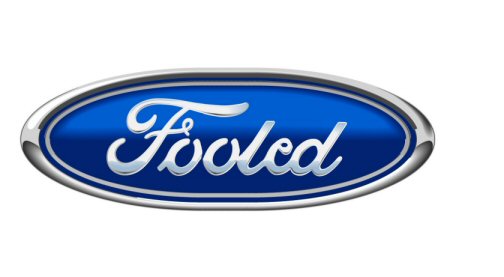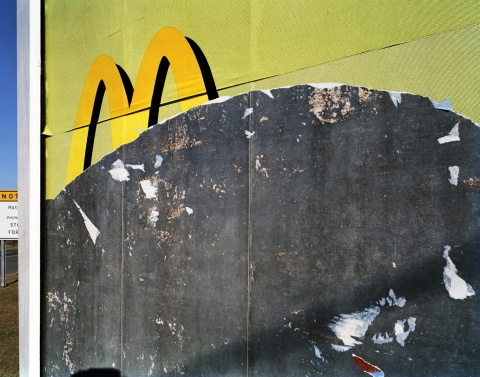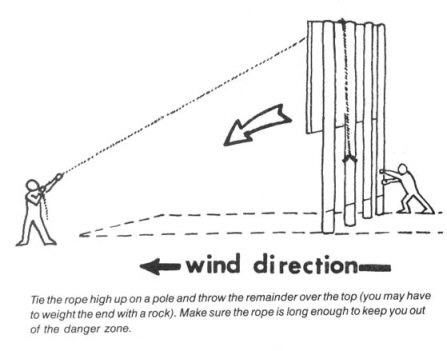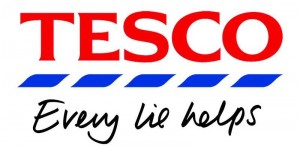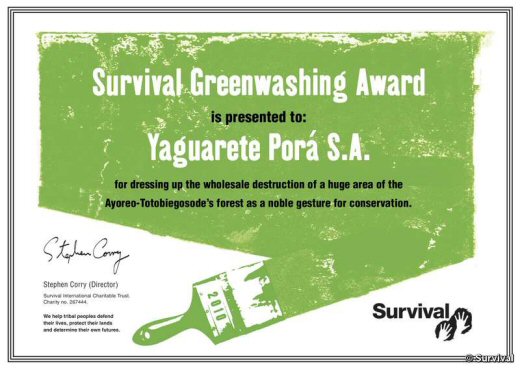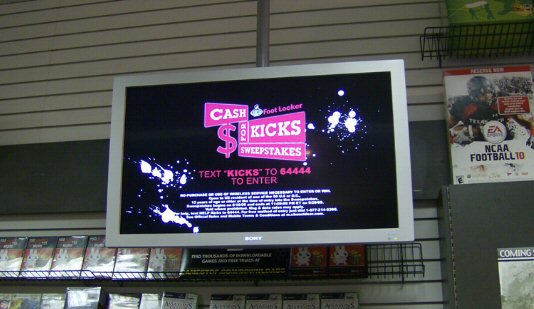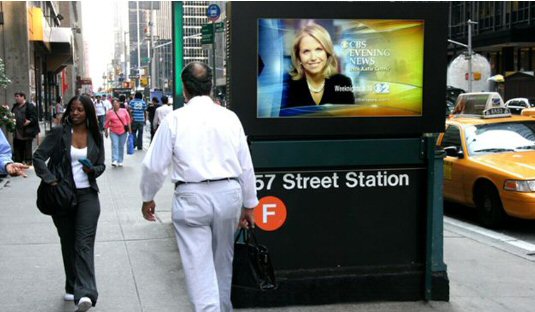Logo Fun With Ford
Posted by keith on February 15th, 2010
There is a story, and it is partly true, that the Ford Motor Company were responsible for the mass incursion of free market capitalism and the associated violent suppression of opposing voices, across South America in the 1960s and 1970s. Certainly the Chicago School of economic thought, led by Milton Friedman, were grateful for the funding provided to a number of their programs by Ford; but as with many of these things, it is not so much the isolated horrors that probing into the history of a great corporation will reveal, as the net effect of thousands of lesser actions, creating a toxic scum around the edge.
Most of these “lesser” actions are in the form of advertising and political funding, and right from the up, Henry Ford was no mug – understanding the importance of having both the public and the political system on his side. Personally I’m not that bothered who killed the electric car – it would have still needed something to run it; what is far more sinister is that such vast corporations can exist at all in a society that, apparently, allows people freedom of choice in how they live their lives.
Any way you like, to paraphrase Mr Ford, “So long as it’s our way.”
A mere trifle, but a perfect example of the corporate mind-meld, comes in the form of an email received a couple of days ago. I reproduce it in full, safe in the knowledge that my readers have the nous to see through the layer of greenwash:
Hello,
Going green is a tagline that everyone wants to be associated with. But Ford Motor Company is walking the walk.
A large part of all auto makers environmental credibility gets placed on how fuel efficient their cars and trucks are. But Ford is taking significant measures this year to spread their sustainability efforts beyond miles per gallon, and into operations and corporate practices.
Today ford announced their Dealer Sustainability Program, in partnership with the Rocky Mountain Institute, aimed at implementing cost-effective ways to improve the energy-efficiency of their facilities, resulting in a long-term reduction in individual dealership’s carbon footprint as well as overall operating costs.
This industry-leading effort kicks off today at the 2010 National Automobile Dealers Association Convention in Orlando.
Please see the full release below let us know if you have any questions or would like any additional information or a follow up briefing from Ford.
Thank you!
FORD ANNOUNCES DEALER SUSTAINABILITY PROGRAM
* Ford Motor Company is launching a voluntary sustainability initiative for Ford and Lincoln Mercury dealers to reduce their carbon footprint and improve the energy-efficiency of their dealerships
* Ford has partnered with Rocky Mountain Institute, a leading energy-efficiency organization to pilot new technologies and architectural design principles, at three dealerships in diverse climates
* The ‘Go Green’ dealer sustainability initiative is fully integrated into the company’s existing architecture to provide dealers with the ability to improve energy efficiency and lower operating costs
ORLANDO, Feb. 14, 2010 – Ford Motor Company’s commitment to contributing to a better world further expands today with the announcement of the ‘Go Green’ Dealership Sustainability Program. The program is being shared with the company’s U.S. Ford and Lincoln/Mercury dealers today at the 2010 National Automobile Dealers Association Convention.
The goal of the program is simple: Collaborate with dealers to implement cost-effective ways to improve the energy-efficiency of their facilities, resulting in a long-term reduction in individual dealership’s carbon footprint as well as overall operating costs. Participation in the ‘Go Green’ Dealership Sustainability Program is voluntary for dealers.
“In keeping with Ford’s commitment to the environment, this program is a great fit for our dealers because it provides a variety of energy-efficient improvement options regardless of the current age and design of the facility,” says Sue Cischke, group vice president, Sustainability, Environment and Safety Engineering. “This allows all dealers the opportunity to participate in improving the energy efficiency of their facility and gives them flexibility in making choices that are right for them and their dealership.”
Ford has partnered with Rocky Mountain Institute (RMI), an organization recognized as a leader in providing energy-efficiency solutions to businesses, communities and organizations around the world.
“We applaud Ford for their ongoing energy-efficiency efforts around the world,” said Amory B. Lovins, Co-Founder, Chairman and Chief Scientist, Rocky Mountain Institute. “This initiative will have a positive impact participating dealers decrease their consumption of energy. Implementing these cost-effective solutions will also improve dealer’s bottom line over the long-term.”
Getting Started
Dealers interested in participating in the ‘Go Green’ Dealership Sustainability Program will first receive a comprehensive energy assessment from sustainability experts at Ford. After the thorough assessment is completed, Ford and the dealer will collaborate on energy-saving options available and will tailor a program to meet the needs of the dealer. Solutions are wide-ranging and can be implemented for dealers with existing facilities as well as dealers who are constructing new facilities.
Dealers who participate in the program will be able to take advantage of several benefits, including guidance on available State and Federal tax credits and incentives, as well as access to technical expertise and resources to assist with selection of energy-efficient products and equipment.
Ford is finalizing details to initiate a pilot program with three dealers located in Florida, New York and Nevada.
“Through this initiative we are making available to dealers the same techniques, principles and expertise we use to reduce our energy use and contribute to a better world,” said Cischke.
___________________________________________
Eddie Fernandez I Ogilvy Public Relations Worldwide
T: 916.231.7733 / F: 916.418.1515
E: eddie.fernandez@ogilvypr.com
A: 1414 K Street, Ste 300, Sacramento, CA 95814
Hello, Eddie, did you forget to mention that Ford exists to sell cars and trucks that burn fossil fuels. Never mind, perhaps you would like to use the logo at the top in your next press release. It would be a lot more honest.
Posted in Campaigns, Corporate Hypocrisy, Subvertising | 1 Comment »





